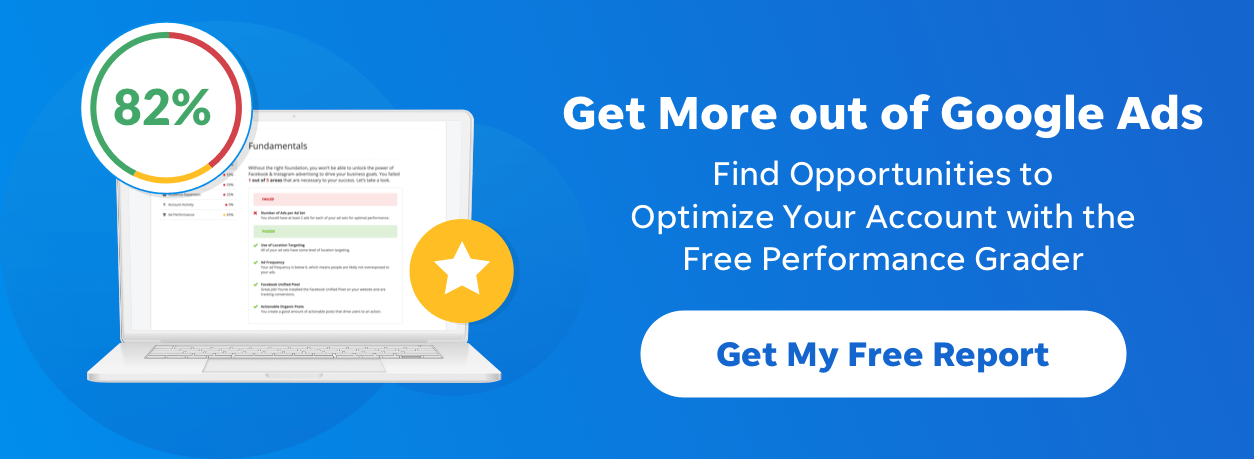The Positives of Removing Negatives
In politics, the term “going negative” tends to have a, well, negative connotation—typically from the candidate who just placed a negative ad and dares his or her opponent not to do the same.
In our case, however, most of the companies we help to optimize their PPC campaigns don’t even realize that going negative—that is, eliminating the useless keywords that bring the wrong people to your site—is even a possibility.
We’ve been preaching the concept for while—including a handful of blog posts and even an e-book – but now is as good a time as any for a quick refresher on the topic.
To recap: a negative keyword is, according to Google, “A type of keyword that prevents your ad from being triggered by a certain word or phrase. It tells Google not to show your ad to anyone who is searching for that phrase.” For example, if you are selling eyeglasses, you don’t want people searching for drinking glasses to see or click your ads.
Negative keywords are the key to eliminating wasteful ad spend. Since using negative keywords strategically restricts your PPC advertisements, it allows you to focus your advertising budget on only your best potential audience.
And yet, the message still isn’t getting through. Many PPC advertisers neglect to set up a negative keyword list. My suspicion is that they are intimidated by negative match types. Believe me, I can sympathize, but I can also assure you that this is easily overcome. Here’s a quick overview of each negative match type:
- Negative Broad Match: This is probably the most misunderstood and improperly used match type. To set the record straight, a broad match negative will eliminate your ad if all of the negative words appear, in any order, in the search query. For example, if the negative keyword is “drinking glasses,” your ad would not show if the search was “drinking glasses for martinis.” However, in the case that only one part of the negative was in the search query, such as “glasses for martinis,” your ad would be eligible to show.
- Negative Phrase Match: This prevents your ad from entering the auction anytime the entire, intact phrase appears in the query, in that particular order. Therefore, if the phrase match negative is “drinking glasses,” your ad will be excluded if the search query is “red drinking glasses” but it will still be eligible to show if the query is “glasses for drinking martinis.”
- Negative Exact Match: This is the negative match type that will eliminate the least traffic. It will only prevent your ad from showing if the exact term is the entire query. If any other words are included in the search, your ad will still appear. So, if the exact match negative is “drinking glasses,” it will only be effective if the search query is “drinking glasses.” If the search query is “red drinking glasses” an ad will still be eligible to show.
It’s worthwhile to note that, unlike traditional match types, negatives are never extended to synonyms or different variations (singular/plurals, conjugations) of keywords. Therefore, you should aim to set multiple variations of your negative keywords.
I’ve also noticed that advertisers tend to take a reactive approach to setting negatives. For instance, in a blog post earlier this year, I described how a fiber company saw a huge jump of “Justin Bieber” related searches resulting in unqualified clicks, much to their dismay. Upon further inspection it was clear that their customers didn’t have Bieber fever (or maybe they did, but it was unrelated to their searches). Rather, Bieber was being interpreted as a misspelling of “fiber” so they needed to set it as a negative keyword.
Situations like these are easily avoided through negative keyword research. Sometimes you can predict good negatives for your business, simply based on your industry knowledge. For example, if you sell high-end, expensive eyeglasses, you’ll want to set words like “cheap” or “knockoffs” as negatives right off the bat.
However, it’s key that you don’t stop setting negatives when you’re tapped out on the obvious terms. There are a few additional methods you can use to nab those hard to find terms. For example, it can be helpful to get a second set of eyes on the account, particularly someone who does not work in your industry (they don’t even have to understand PPC!). Oftentimes, advertisers become so immersed in their account, that they struggle to come up with terms that may be searched with their keywords and are actually completely irrelevant.
It is also critical that you mine your search query report regularly. You may discover that your ads are appearing for unqualified searches. This is ultimately what saved my client in the aforementioned Bieber fever scenario.
Our $25,000 “Grade and Get Paid” contest offers a chance for companies to see how their PPC is performing using our free AdWords Grader, then enter to win a $25,000+ prize toward their Google AdWords budget, along with software tools from WordStream and Constant Contact. We ask entrants to tell us what they’ve learned from their free performance reports, and so far, one of the most common lessons involves better use of negative keywords. For example:
What did you learn about your PPC account?
“…the huge amount of money I am losing by not making proper and effective use of negative keywords”
“…we’re still not adding enough negative keywords.”
What will you do differently in PPC?
“Start implementing negative keywords.”
And even those who understand the concept feel they could do better:
“I thought I was doing a good job with my negative keywords. Just goes to show there is always room for improvement.”
So what’s the big takeaway here? Identify the words that are sapping your PPC budget—and remove them.
Also, Bieber fever is fine, but on your own time.
Have you found any particularly egregious or surprising negative keywords in your PPC campaigns? Please leave examples in the comments below.
Meet The Author
Erin Sagin
Erin Sagin worked at WordStream for five years with roles in Customer Success and Marketing. She lives in California.
See other posts by Erin Sagin
More Articles Like This
Comments
Please read our Comment Policy before commenting.






